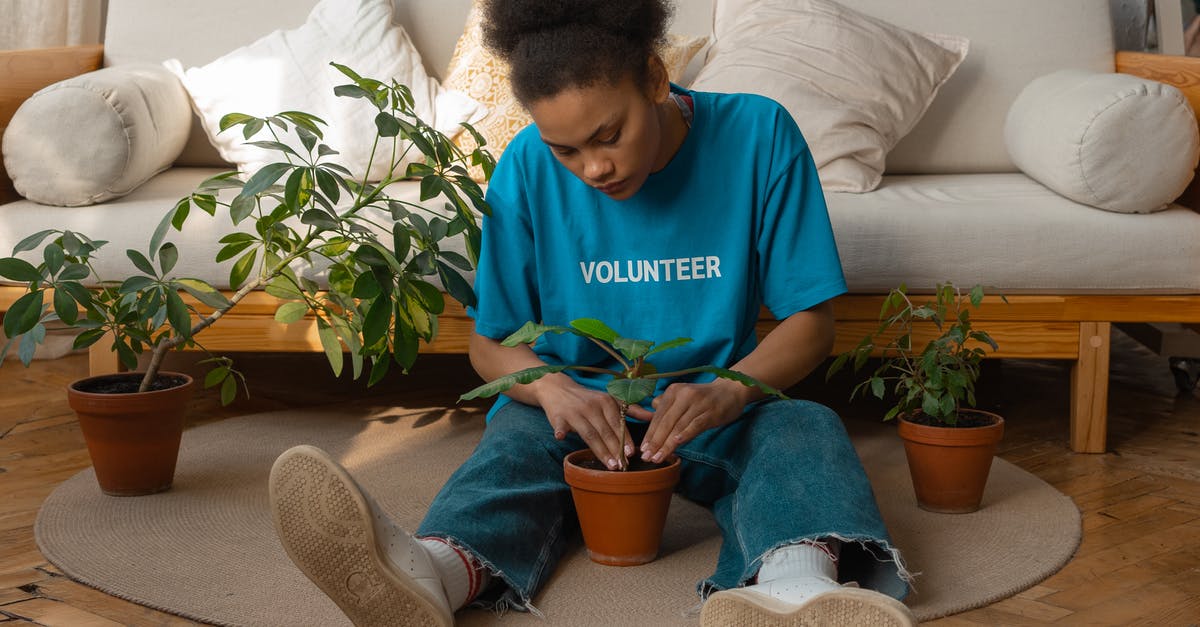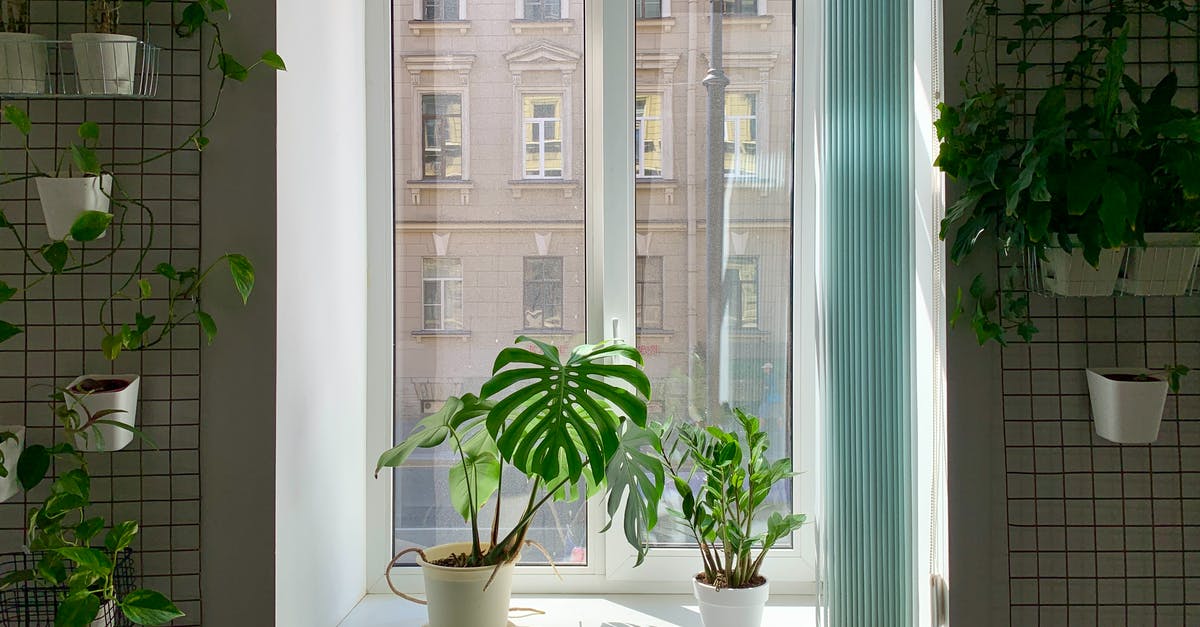What went wrong with these pots de creme au chocolat?

I baked pots de creme au chocolat yesterday following this recipe, but something went wrong:
As you can see in the photos below, the chocolate seems to have separated out, forming a relatively firm top layer, while the remainder underneath is lighter in color and has an unappetizing wet mousse-like texture.
I followed the recipe closely, but let me add some clarifications to avoid ambiguity:
- I made the chocolate variant only, so doubled the quantities of dark chocolate (I used 65%) and cocoa
- I beat the eggs and sugar in a stand mixer with a wire whisk attachment, then added the infused milk and then the melted chocolate while still mixing on low speed
- I poured the resulting mixture into eight 4oz glass canning jars (~3oz per jar). At this point, the mixture appeared to be homogenous.
- I arranged the jars in a 9x12x2" steel pan, placed it into an electric oven preheated to 320 degF, then filled the pan with boiling water to about halfway up the glass jars.
- I baked these until the tops would hardly wobble when I tapped the jars, which was at the 29 min mark
- Once I removed the jars from the water bath, the layering was immediately obvious in all eight pots de creme. Interestingly, the bottom of the chocolate layer seems to roughly align with the water level in the bath.
- After cooling briefly, I put lids on the jars and refrigerated them for several hours. The photos above are after refrigeration overnight.
The only possibility I can come up with is that I inadvertently filled the pan with cold water. I used an electric kettle, and while I thought I heard it bubbling in the background, my attention was focused on another recipe. Maybe I never switched it on.
Is this a likely explanation for these results? I can see how a cold water bath would result in uneven cooking, but I haven't been able to find good reasoning for why the chocolate would separate out on top.
Best Answer
You've answered your own question. The water bath should have gone all the way up to just above the crème in your pots. I'd also bet that you had this on the top rack of your oven, this type of water bath should be on the lowest rack to keep the tops from cooking faster than the bottoms which is what looks like happened. I've had the same thing happen with crème brulee before.
Once I removed the jars from the water bath, the layering was immediately obvious in all eight pots de creme. Interestingly, the bottom of the chocolate layer seems to roughly align with the water level in the bath.
Pictures about "What went wrong with these pots de creme au chocolat?"



Why is my pots de creme runny?
If the texture is a little runny after the custard has cooked, it should set up once it has had time to chill. It is due to the inclusion of the chocolate that the temps are different from our regular pot de cr\xe8me.How long does Pots de Creme last?
How Long Does Pots De Creme Last? You can store this decadent dessert in your refrigerator for 2-3 days. You also may want to serve it with a dollop of whipped cream like we did. Store the whipped cream separate and add when serving.What were pots de creme used for?
Technically the pots de creme is a lightly set, baked custard. The French do not have a word for \u201ccustard\u201d the dish is simply referred to as \u201ccreme\u201d. Custards as we know them today date back to the Middle Ages. Then it was used as a filling for a Flan or a Tart.How do you say pots de creme?
Here's how you DO pronounce Pots de Creme: \u201cPo de Krehm\u201d, or, if you want to get really technical, \u201cPo de k(insert phlegmy, back-of-the-throat crackly French sound)ehm\u201d.Martha Stewart's Chocolate Pots de Crème (Pudding) | Martha Bakes Recipes
More answers regarding what went wrong with these pots de creme au chocolat?
Answer 2
I'm relatively confident I have figured out what went wrong with these pots de creme au chocolat.
I tried this recipe again, and this time I mixed the chocolate a different way to see if it solved the problem. Instead of melting the chocolate first and then adding it to the eggs, sugar and milk mixture, I chopped the chocolate first, then poured the hot milk over the chocolate while stirring.
I noticed that this chocolate and milk mixture never became completely smooth. There were many granules of chocolate (about the size of granulated sugar) floating in the mixture, which would not dissolve, even after prolonged stirring. Tellingly, when I stopped stirring, these granules floated to the top of the milk, forming a layer that was clearly visible through the side of the bowl.
In hindsight, I noticed these granules when I attempted this recipe the first time, but didn't appreciate what they were or that it was abnormal. I found a reference to this issue here:
If your recipe calls for melting chocolate with a liquid, such as cream, again, the proportions need to be right. Too little liquid, and your chocolate will separate and look horrible (this can usually be corrected by adding more liquid). If you have too much liquid and don’t add it slowly enough, however, you may end up with small particles of chocolate suspended in it.
It looks like this applies to both methods I used to mix the chocolate with the milk, since a large volume of liquid was involved in both cases.
I was able to solve the problem using a handheld mixer on high speed to beat the chocolate and milk, which broke up the granules and gave a smooth mixture. I then added this to the egg and sugar mixture and proceeded with the recipe, which produced homogenous, perfectly-cooked pots de creme au chocolat!
So, to conclude, I'm confident the problem was that the chocolate didn't mix fully with the milk, resulting in chocolate granules that floated to the top of the mixture, forming this chocolate-rich layer on top of the pots de cremes. I It should be possible to prevent these granules forming by melting the chopped chocolate with a smaller amount of milk (but enough so that it doesn't seize), and if you get granules, they can be broken up by beating with a handheld electric mixer on high speed.
Sources: Stack Exchange - This article follows the attribution requirements of Stack Exchange and is licensed under CC BY-SA 3.0.
Images: Sasha Kim, Mikhail Nilov, Elena Golovchenko, Ylanite Koppens

